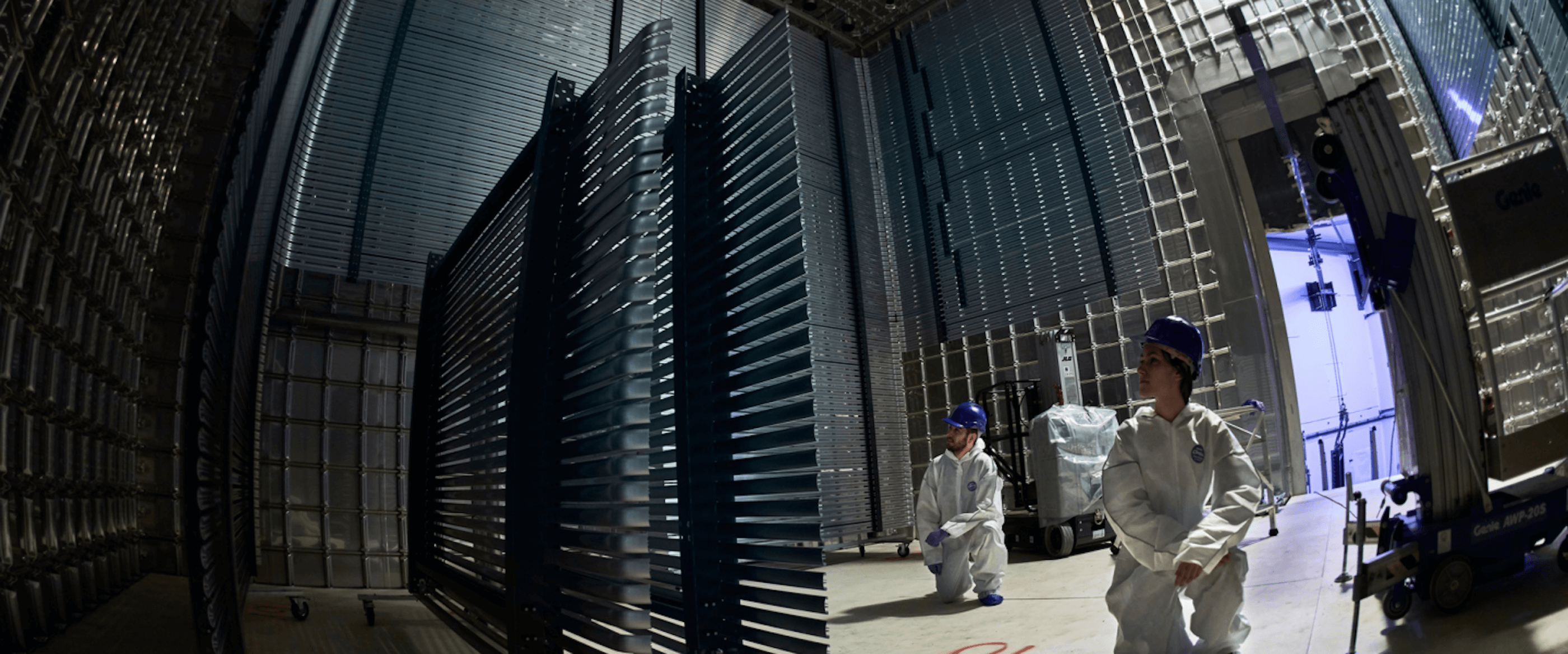
1400+
Scientists and engineers

200+
Laboratories and universities

35+
Countries

The Deep Underground Neutrino Experiment (DUNE), supported by the Long-Baseline Neutrino Facility (LBNF), is an international endeavor hosted by the U.S. Department of Energy’s Fermilab. DUNE brings together scientists and engineers from more than 35 countries around the world, all sharing the same goal: to understand the neutrino, one of the most elusive and mysterious subatomic particles in the universe.
What will studying the neutrino tell us? These particles are everywhere in our universe, rarely interacting with matter. Trillions pass through us every second without leaving a trace. In nature, they are produced in great quantities by the sun and other stars. They have been with us since the earliest moments of the universe, and may carry the answers to some important questions: What is the origin of matter? What is the relationship between nature’s forces? How do the most extreme objects of our galaxies form? And how did we come to exist at all?
To answer these questions, scientists are building the most advanced system to generate and detect neutrino particles ever conceived. The effort involves a world-leading new particle accelerator (part of the PIP-II project), an upgraded neutrino beam (provided by the LBNF project) and a world-class experiment (built by the DUNE collaboration). DUNE includes a sophisticated particle detection system at Fermilab and the massive particle detector modules to be installed a mile beneath the surface at Sanford Underground Research Facility in South Dakota. Once PIP-II, LBNF and DUNE are complete, scientists will send trillions of neutrinos 1,300 kilometers (800 miles) through the earth, with no tunnel required, and study them when they interact in detectors on both ends of that journey.
With DUNE prototype detectors tested at CERN and Fermilab, LBNF construction work underway in South Dakota and at Fermilab, a PIP-II test accelerator completed at Fermilab and components being built around the world, this effort is taking shape now. The next few decades will bring untold scientific discoveries, and DUNE, LBNF and PIP-II will be central to making those discoveries possible.

Credit: CERN
